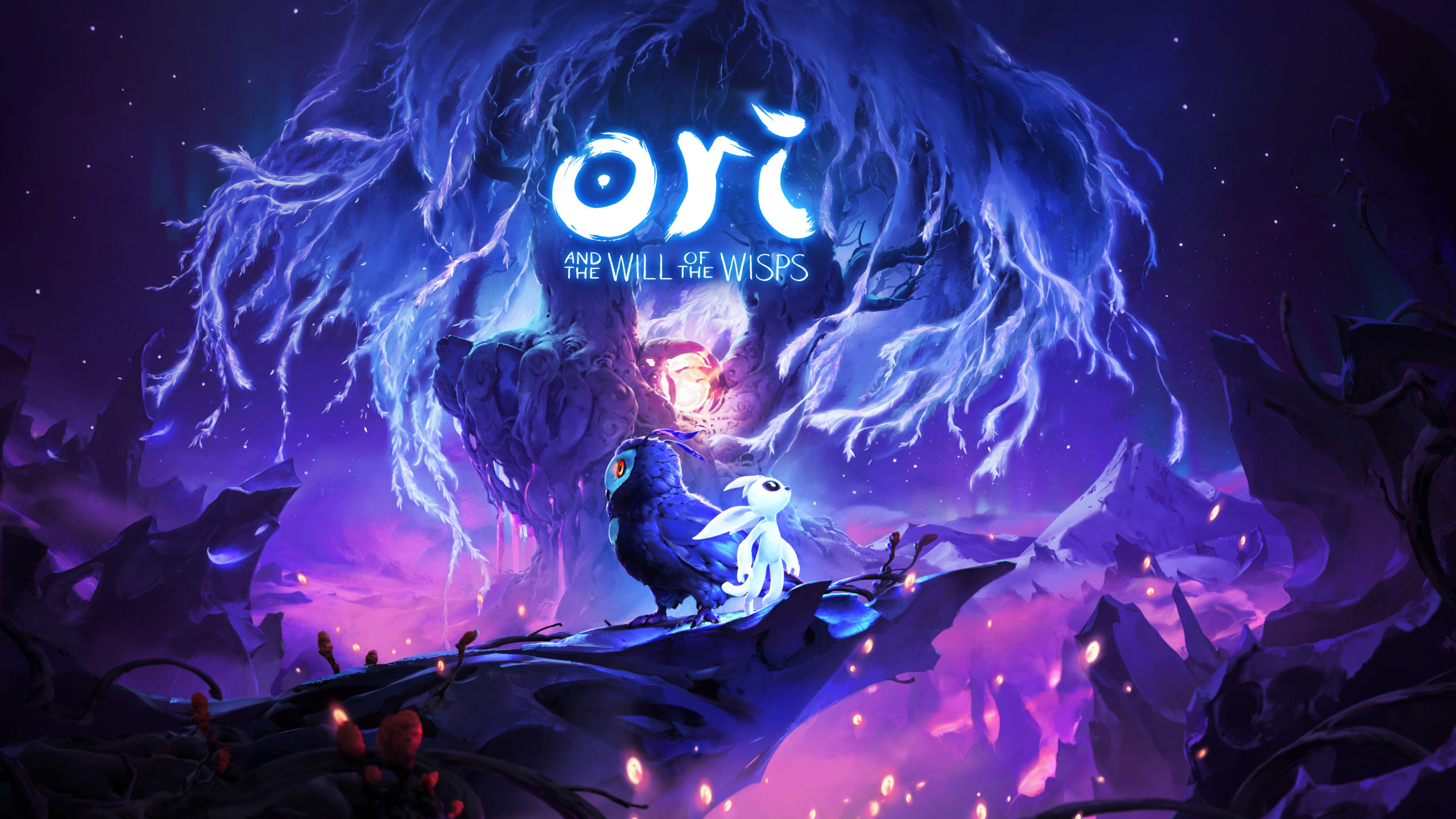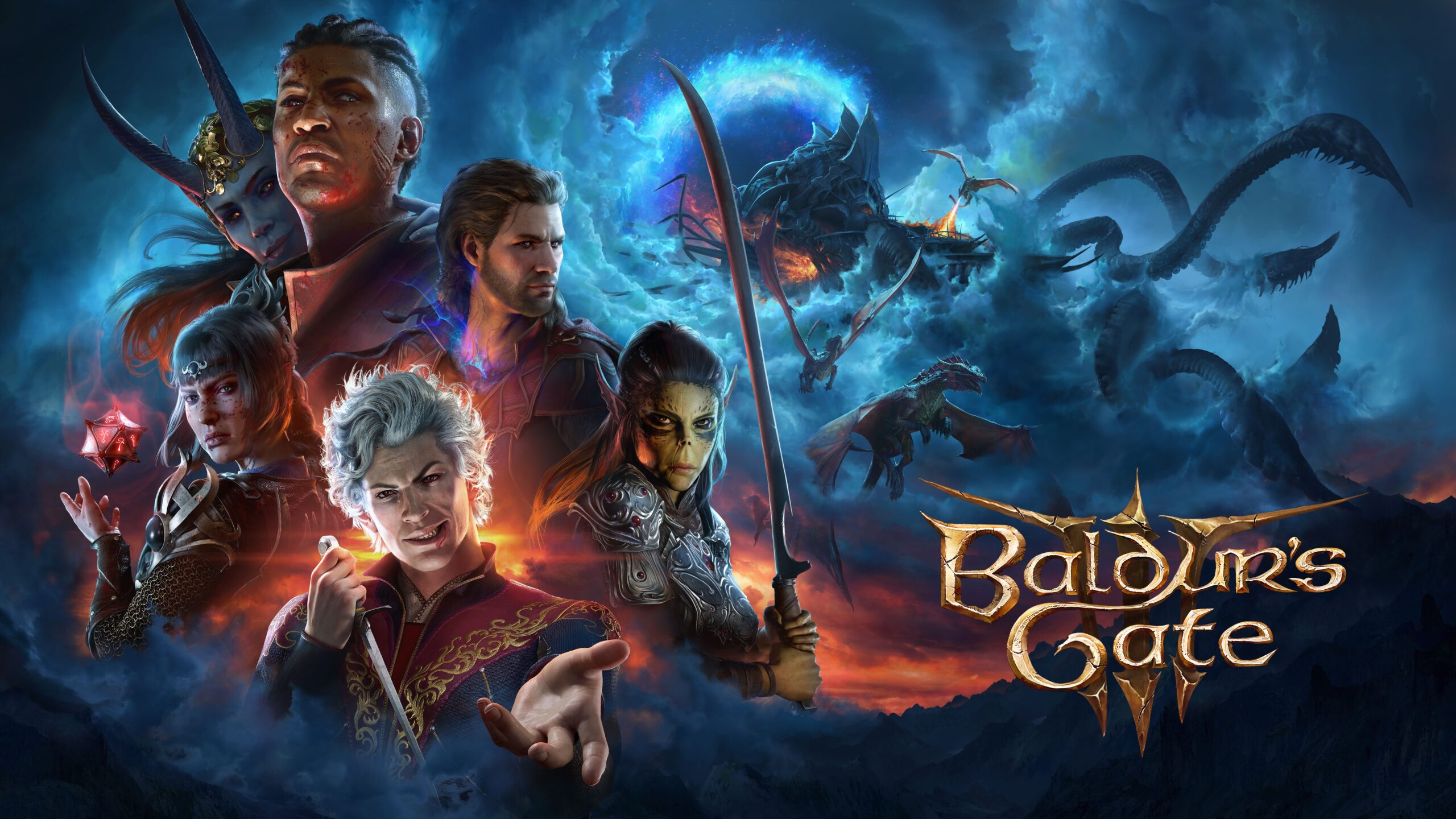
Ori and the Will of the Wisps Key Art Horizontal
Review: Ori and the Will of the Wisps
All around us, nature grows and adapts to the world, creating beauty and mystery in unlikely places. Animals fight, hunt, and support one another, unseen by the human eye except in the rarest of circumstances. There’s an entire ecosystem that has been in place for thousands of years, with each creature serving its purpose and continuing the cycle that came before it.
Moon Studio’s Ori and the Will of the Wisps explores these ideas and Ori’s role in the world around him in a heart wrenching story that continues the legacy of 2015’s Ori and the Blind Forest. Starting immediately after the events of Blind Forest, Will of the Wisps sees Ori and new friend Ku stranded in a forest outside of Nibel. Stricken by a threat similar to the Darkness from the first game, the forest has fallen to Decay brought about by the death of the Willow tree that contained the area’s light. Decay has spread throughout the land, corrupting the environment and its inhabitants, possessing them and making them incredibly hostile. At the center of this conflict is Shriek, a monstrous bird who thrives in the world the Decay has created and is looking to stop anyone from bringing light back to the tree.
Where Blind Forest was very much about Ori and his journey to fix his own environment, Will of the Wisps focuses more on Ori’s role in helping others survive and overcome the problems that plague their land. The new environment is host to a variety of new creatures and NPCs, a first for the series, making the stakes of stopping Decay even higher. The mission is no longer about Ori and his friends, but rather helping defenseless creatures who are barely able to survive.
Ori’s journey on a macro level isn’t much different from that in Blind Forest. Players must recover items, in this case Will of the Wisps, in order to restore light to the area and purge the evil that is threatening the land. However, the moment to moment story beats distance themselves from their predecessor by using NPCs and boss fights to help drive the story and create emotional moments.

The inclusion of boss fights is rooted in the game’s narrative as they are usually creatures corrupted by Decay, and the resolution of these fights is more satisfying than Blind Forest’s levels which ended in challenging platforming segments. These encounters are well crafted both aesthetically and from a gameplay perspective. The bosses’ large sizes dwarf Ori, making them much more intimidating than standard enemies, and are all uniquely designed. The new combat system also makes not only these boss fights, but also moment to moment combat more engaging than its predecessor.
Instead of simply shooting enemies and dodging around, Ori’s abilities in Will of the Wisps are much more offensive. Players still need to be moving and dodging where they can, but Ori’s primary abilities are now melee based, requiring players to get up close to the enemies. There are still ranged attacks, but these require energy to use, forcing players to eventually resort to their melee abilities. The change from ranged to melee focused combat, along with the variety of abilities that Ori can quickly swap between makes combat more engaging and less monitious than it was in Blind Forest. Players can choose which of their combat abilities to upgrade and there is enough variety in the loadouts to allow players to develop their own style and encourages experimentation with their skills.
Passive abilities also make their debut in Will of the Wisps in the form of shards, allowing for even more customization in playstyle. Like combat abilities, shards can be upgraded and purchased from vendors around the world. At first, players will only be able to equip four shards at a time, but exploration will lead to combat shrines, small combat challenges that are incredibly easy given their reward, which in turn will give the player more slots to equip shards.
Exploration is still a key component in Will of the Wisps, and due to the introduction of side quests, provides better motivation for exploration than any Metroidvania in years. The cast of characters that litter the forest outside Nibel need Ori’s help with surviving their devastated world, but completing these quests hardly ever require massive amounts of backtracking. The map is intuitively designed to encourage players to look in nooks and crannies which will ultimately lead to finding the items NPCs have asked Ori for. Where some games might have a hard time balancing the need to do side quests with character progression and therefore story progression, Will of the Wisps’ side quests never feel required to progress Ori’s skills. Instead, the side quests mostly come naturally and there are plenty of enemies and Spirit Lights scattered around the map to ensure you have enough currency to keep Ori’s abilities well maintained.

The desire to explore the forest has the added benefit of encouraging players to see the beautiful world that Moon Studios has created. From snowy mountains, to spider lairs, to underwater caves, Will of the Wisps’ environments each feel distinct and have a impressive attention to detail complimented by the game’s gorgeous art style. The creatures that inhabit the world are also well designed, invoking a fairy tale like aesthetic which blends perfectly with the rich colors of the environment.
Originally announced in 2017, Ori saw several delays during development and the influence of games released between the announcement trailer and launch is obvious in the gameplay. Team Cherry’s Hollow Knight is seen early on in the game in the form of a healing ability missing from the original Ori. Like Hollow Knight, players can spend their mana to restore their health, but the ability takes time to cast, leaving the player to carefully decide when to heal if they are in the middle of a battle. Several platforming sections were also very reminiscent of Matt Makes Games’ Celeste, requiring precise movement, jumps, and ability usage to traverse dangerous terrain. While the platforming may not be as tight as Celeste, Ori is still one of the best 2D platformers and the variety of traversal abilities make navigating the world more challenging and smoother than the original game.
With the release of Ori and the Will of the Wisps, Microsoft finally has the new flagship mascot they’ve been missing during the Xbox One generation. Not only that, but Moon Studios has established themselves as a creative force willing to innovate and have cemented themselves as a staple of Microsoft’s first party team. Ori and the Will of the Wisps improves upon the original in almost every way and is a captivating journey through a magical world that provides challenge and heartstring pulling moments in equal measure.
Author’s Note: The review copy of Ori and the Will of the Wisps was a prerelease version of the game as indicated by the studio. Therefore, it did have performance issues. We have been informed that a day one patch will be available for retail customers that will address and fix these issues. For this reason, the reviewer decided not to comment on the performance of the game, and instead focus on the other elements of the game as retail customers may never see the issues encountered by the reviewer.
Review code provided by Microsoft and played on Xbox One S and PC





